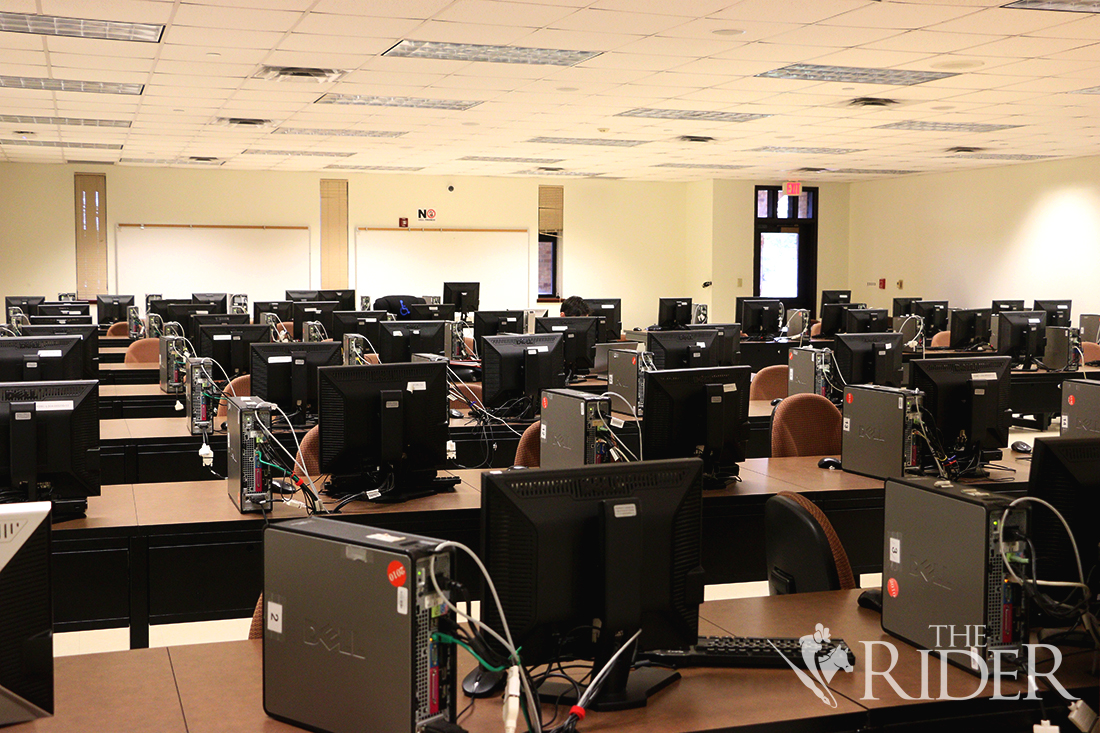
Computer science students on the Brownsville campus taking advanced or graduate courses are having to commute to the Edinburg campus to take most of their classes.
Such is the case for computer science graduate student Luis Garay, who wants an answer as to why there aren’t more courses in Brownsville.
Garay said if students search through the ASSIST application in myUTRGV, they would notice that most of the classes for his graduate program are being offered only in Edinburg.
“They promised when schools were merging, that both campuses would have the same courses,” he said. “It’s three years after the merge and it’s still not the case. Why isn’t that promise being kept?”
In an article published April 6, 2015, in The Collegian, the student newspaper of legacy institution UT-Brownsville, a UTRGV official appeared to have made that promise.
“The main goal is for students to not have to travel,” UTRGV Student Success Vice President Kristin Croyle said in the article. “That’s really important. The idea is that a student should be able to finish their degree on the campus of their choice. Of course, if there are some elective classes not required for your degree that you decided you just have to have, then you would have to travel for that one, but it wouldn’t be required, that would be the student’s choice.”
Garay was an undergraduate when UTRGV opened its doors in Fall 2015. Even though both campuses were transitioning into one university, he was still able to take all his undergraduate courses on the Brownsville campus.
Before and during the semester, he emailed Emmett Tomai, the Computer Science interim department chair; Patricia McHatton, the UTRGV interim provost and vice president for academic affairs; Bin Fu, a computer science professor; and UTRGV President Guy Bailey.
Garay received a response from Fu and Tomai on Aug. 24, and met with McHatton on Nov. 1.
In a Sept. 18 email to Tomai, Garay wrote, “The current state of courses offered is unfair, inconvenient, and raises many issues for us Brownsville students. I ask that you offer the Brownsville campus the same courses that the Edinburg campus offers.”
Tomai replied on Sept. 27: “We are also exploring and evaluating every option for delivery at both locations. This will take some time to accomplish. In the meantime, students can pursue the courses on the Edinburg campus.”
For Spring 2018, Garay will take all of his graduate courses, which is 12 credit hours, on the Edinburg campus.
“I am not trying to be disrespectful. I just want to know why aren’t we getting classes down here,” he told The Rider earlier this month.
Garay also said services, such as interactive television (ITV) and online courses, would benefit Brownsville students who have to commute to their classes.
“We are exploring the use of ITV as a means of delivery, but this is based on availability and appropriateness of the courses,” Tomai wrote in the email to Garay.
Next semester, 12 computer science graduate courses are being offered; eleven are Edinburg-based and one is ITV.
In the meeting with McHatton, Garay said he brought up his main concern, such as why online or ITV classes are not offered on the Brownsville campus. She replied that professors require special training to teach online or ITV classes, Garay said.
In a Nov. 15 interview with The Rider, McHatton said there is a minimum requirement of 10 students to open a graduate course, which has not been met by Brownsville computer science graduate students.
“There is a need to have a certain number of students in a course,” she said. “I think we all understand that you can’t run a course when you only have a couple of students. So, one of the things that we need to do is think about how can we increase the number of students on the Brownsville campus who are interested in computer science. That’s a conversation that we’ve had as to how can we best generate more interest on this campus, so we can increase the number of students, making it more possible for us to be able to offer all courses in one location.”
Regarding the same issue, Tomai told The Rider the department is experimenting and working with different modes of course delivery, such as online and ITV, to see what the responses are like and then expand from that.
“For example, this summer, we offered a master’s ITV class in Brownsville because we wanted to [know], ‘OK, how’s this gonna work, what’s the demand like, what’s the delivery gonna be like, how will students respond to it, what will the learning outcomes be like,’ and, unfortunately, only three people in Brownsville signed up for it,” Tomai said. “So, we moved to it and we offered another class, ITV, for Brownsville that is running this fall and, again, only two or three people from Brownsville signed up for it. So, that’s just part of the process of expanding.”
He said the department will keep trying to encourage demand from the Brownsville campus, but it cannot run a class with two or three students.
“In terms of class availability, with all of our courses, undergraduate, graduate, we are all looking at how do we best offer these classes to meet the student demand to deliver the highest quality of education,” Tomai said. “We are expanding. We are going to keep trying to find ways to make that more convenient, make that more accommodating, but, you know, any student who is beginning the master’s program has to know that at this time, the master’s programs are offered in Edinburg.”
Asked why computer science online and ITV courses are not offered in Brownsville, McHatton replied that those two options are not “as simple as they sound.”
“Sometimes the idea is, ‘Well, you got a course, all you have to do is record your lectures and just put them online and that’s it,’” McHatton said. “That’s not the way in which online courses are designed. There is particular pedagogy that’s aligned with courses that we need to follow; it has to go through quality measures to make sure it handles best practices. So, there’s a design process and that takes time in order to be able to do that for every single course and not all courses are conducive to be delivered online.
“Same thing with the ITV. It’s another possibility and, in fact, we’ve increased the number of ITV classes that we have now, so we’ve got more available. So, we are able to use that delivery option more often and I think at least one of the computer science classes has been delivered through ITV already. They’re working on trying to do more, but that’s also a design process.”
She said the university would love to have the sufficient number of students on the Brownsville campus to be able to expand the courses. UTRGV’s main goal was to expand educational opportunities across the Rio Grande Valley, she said.
“We wanted to make sure that students from both campuses had an opportunity, one to the extent possible to take classes at their home campus, but also to have an opportunity to expand program offerings by having transportation available should students want to go one location or another,” McHatton said.
Even though transportation is provided to commute from one campus to another, the Vaquero Express Campus Connector’s schedule has a three-hour gap from 7:30 to 10:30 p.m., making graduate students who get out of class at 8:20 p.m., such as Garay, wait two hours for the next shuttle.
“It is surprising to me that the shuttles are not aligned to the classes,” Tomai said. “One of the things we are looking at is try to align class times better with shuttle schedules. That’s a good solution to that problem.”
Garay told The Rider he hopes that in the near future, the university can provide transportation between campuses at least every hour so students can get home earlier.
“Hopefully, that can alleviate the transportation issue,” he said. “But, in regards to the courses, they just said they’re trying.”





